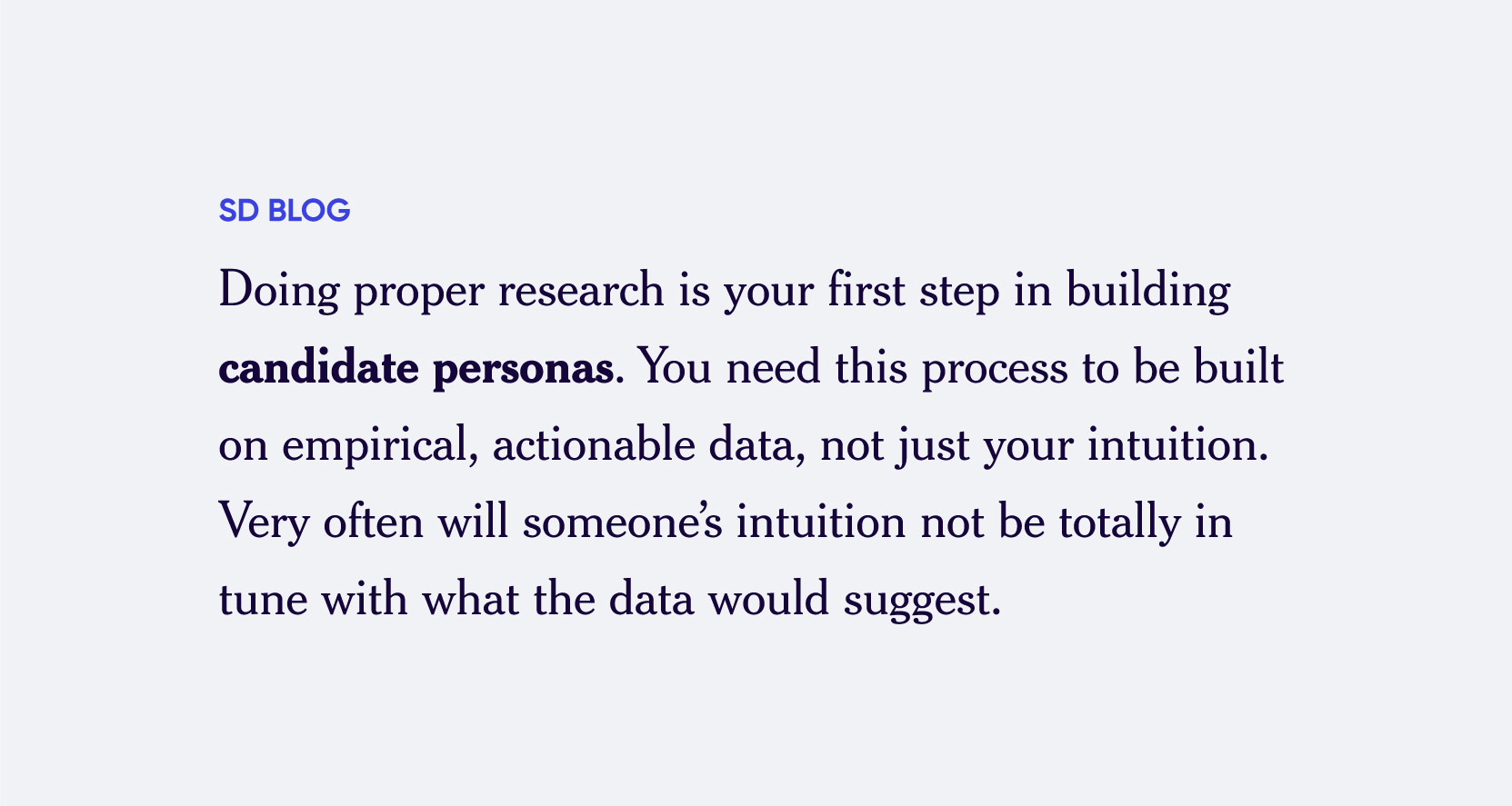In the dynamic world of recruitment, Return on Investment (ROI) has emerged as a pivotal metric. Every dollar spent in the hiring process should ideally lead to a quantifiable return, whether in the form of a top-tier hire, reduced time-to-fill, or enhanced employer branding. In an era where data-driven decisions reign supreme, understanding and optimizing ROI is paramount for any forward-thinking recruitment strategy. This article delves into the synergy between recruitment marketing and job boards, and how they can be harnessed to maximize ROI.
The importance of ROI in recruitment
When faced with a multitude of pressing tasks, assessing your recruitment strategies might take a backseat. However, here are three compelling reasons to place emphasis on evaluating your ROI:
- Justify costs to stakeholders and get the C-Suite board for changes
Measuring recruitment ROI is crucial for understanding the effectiveness of your hiring strategies. By evaluating ROI, you can identify the most impactful hires and the success of various recruitment methods. For instance, using an interview tool can streamline the interview process, allowing for efficient candidate comparisons and reducing time-consuming meetings. Despite initial concerns from management about the tool's cost, analytics reveal its value in improving candidate quality and reducing hiring time by 12%. Such data can be presented to justify the tool's expense, emphasizing its role in enhancing hiring accuracy. In essence, understanding recruitment ROI helps in making informed decisions about investing in effective hiring tools and strategies.
- Boost your hiring efficiency
Efficiency in the hiring process is vital. To gauge this, one must analyze the time and resources utilized at each recruitment stage, like sourcing, screening, and interviewing. If hiring managers spend excessive hours on tasks like screening CVs, it's worth reconsidering the process's effectiveness. McKinsey & Company's research indicates that top companies have a 50% faster hiring process than others. These successful companies monitor crucial recruitment metrics, allowing them to swiftly spot and address inefficiencies. By optimizing their processes, they save time and resources, enabling hiring managers to focus on crucial tasks like interviewing potential candidates.
- Increase the quality of applications
Once jobs are posted on job boards, the recruiters receive a huge volume of applications, and screening through these applications is a time-consuming process and tedious. Should the applications lack quality, the recruiters' time and your investment stand to be squandered. To measure the ROI of your hiring budget, it is critical to evaluate the number of relevant applications that are received by the recruiter.
All these factors tie into your top priority as a talent acquisition professional: find and keep top talent for your business.
The Role of Recruitment Marketing and Job Boards in ROI
The talent acquisition team's and recruiters' primary concern is ensuring that every dollar spent yields the maximum possible return in terms of quality hires. But how does one measure the success of their strategies, and more importantly, how can one ensure they are capitalizing on the best resources available? The answer lies in understanding the dynamics between recruitment marketing and job boards and how they relate to ROI.
ROI isn't just about numbers; it's about value. In talent acquisition, this value is derived from the quality of applicants, efficiency in the recruitment process, and long-term retention of employees. Every tool or strategy employed should aim to enhance one or more of these aspects. Recruitment marketing and job boards, each in their unique way, serve this purpose.
Between the strategic depth of recruitment marketing and the broad reach of job boards lies an intersection of potential. While recruitment marketing is about cultivating an irresistible employer brand, reaching out to a larger pool of candidates, and building long-term relationships, job boards provide an avenue to tap into an immediate pool of active job seekers. Before diving deep into the intricacies of each, let's first set the stage by drawing a brief contrast between them. This understanding is essential, for in their contrast lies their complementary strength.
Brief contrast between recruitment marketing and job boards
In essence, while recruitment marketing is about building and promoting a strong employer brand to attract candidates, job boards are platforms that connect employers with active job seekers. Both have their advantages and play distinct roles in the recruitment landscape.
- Nature:
Recruitment Marketing: Proactive and strategic, focusing on promoting the company's culture, values, and benefits to attract potential candidates.
Job Boards: Reactive, serving as platforms where employers post job vacancies and wait for candidates to apply.
- Approach:
Recruitment Marketing: Aims to build a strong employer brand and engage potential candidates through various channels, such as social media, content marketing, and email campaigns.
Job Boards: Relies on candidates actively searching for jobs and applying to posted positions.
- Engagement:
Recruitment Marketing: Offers continuous engagement with potential candidates, nurturing relationships and keeping them interested in the company.
Job Boards: Typically lack mechanisms for long-term engagement, focusing more on the immediate application process.
- Target Audience:
Recruitment Marketing: Targets both active job seekers and passive candidates who might not be actively looking but could be interested if approached with the right opportunity.
Job Boards: Primarily target active job seekers who are actively searching for new positions.
- Cost:
Recruitment Marketing: Investment is spread across various channels and strategies, with a focus on long-term returns.
Job Boards: Employers often pay per job post or for premium features, with costs varying based on the platform's reach and reputation.
Explanation of how job boards work
Job boards are online platforms that connect employers with potential employees. They act as a marketplace where job vacancies are listed, and job seekers can apply for these positions. Note that there are niche job boards and generalist job boards; we are not going to cover this subject in this article, but it’s important to know this aspect.
Most websites offer jobseekers fantastic filtering options to find suitable positions based on location, experience, salary range, and more, so you are more likely to receive applications from candidates who fit your requirements. Interested candidates can apply on the website or be redirected to your ATS.
Here's a breakdown of how job boards work:
- Registration:
Employers: Companies sign up, creating an account to post job vacancies.
Job Seekers: Individuals register, setting up profiles with their professional details.
- Listing Job Vacancies:
Employers post job openings, providing details like job roles, qualifications required, salary, location, and more.
- Job Discovery:
Job seekers browse the platform using filters such as job type, location, or company to find suitable positions.
- Application Process:
Once a job seeker identifies a relevant job, they can apply directly via the job board, often attaching their resume and other necessary documents.
- Notifications:
Employers are alerted when someone applies for their job listing.
Job seekers might receive notifications about jobs that align with their profile or preferences.
- Screening Tools:
Some job boards offer tools to employers to help screen and sort applications, making it easier to identify potential candidates.
- Direct Communication:
Certain job boards have built-in messaging systems, allowing employers and job seekers to communicate without leaving the platform.
- Premium Features:
Premium services might be available, such as highlighted job listings or access to a broader resume database for employers.
For job seekers, some platforms offer career advice, resume-building tools, or insights into industry trends.
Limitations of job boards
Generic Applications: Since job boards make it easy to apply to multiple jobs quickly, employers often receive generic applications that aren't tailored to the specific role.
Overwhelming Volume: Popular job listings can attract hundreds or even thousands of applications, making it challenging for employers to sift through and identify quality candidates.
Limited Engagement: Job boards typically focus on the initial connection between employers and candidates, with limited tools for long-term engagement or nurturing potential hires.
Lack of Passive Candidates: Job boards primarily attract active job seekers, potentially missing out on passive candidates who might be a perfect fit but aren't actively looking.
They’re expensive: Premium features, such as highlighted listings or advanced screening tools, can be costly for employers, especially for small businesses.
Dependence on Keywords: Many job boards use keyword-based algorithms for matching, which can overlook qualified candidates if their resumes don't contain specific keywords.
So, while job boards offer a convenient platform for connecting employers and job seekers, they come with inherent limitations that both parties should be aware of. Balancing the use of job boards with other recruitment strategies can help mitigate these challenges.
The Potential of Recruitment Marketing
Recruitment marketing is a process that uses marketing techniques to identify, attract, and engage potential employees. The goal of recruitment marketing is to build relationships with candidates and create a pipeline of qualified applicants.
Recruitment marketing can be used for both active and passive recruitment. Active recruitment is when businesses actively reach out to potential employees, usually through job postings or other forms of advertising. Passive recruitment is when businesses focus on building their employer brand and creating an attractive work environment, in the hopes of attracting candidates.
Recruitment marketing has become increasingly important as the job market has become more competitive.
The role of recruitment marketing in increasing ROI
Measuring the return on investment (ROI) for recruitment marketing can be challenging. Traditional ROI calculations involve subtracting the initial cost of an investment from its final recruiting value, dividing that number by the cost of the investment, and multiplying it by 100.
However, recruitment marketing plays a pivotal role in enhancing the Return on Investment (ROI) for businesses. Here's how:
Attracting Quality Candidates: By leveraging targeted marketing strategies, companies can attract top-tier talent that aligns with their organizational goals. Hiring the right talent the first time reduces turnover costs and increases productivity.
Reducing Time-to-Hire: Effective recruitment marketing can expedite the hiring process by creating a steady pipeline of qualified candidates. This reduces the time and resources spent on sourcing and interviewing.
Enhancing Employer Brand: A strong employer brand can reduce the cost-per-hire. When a company is perceived positively in the job market, it attracts candidates more easily, reducing the need for expensive job ads and headhunting fees.
Engaging Passive Candidates: Passive candidates, or those not actively looking for a job, can be some of the best talent available. Recruitment marketing strategies, like content marketing and social media engagement, can pique their interest and bring them into the hiring funnel.
Data-Driven Decisions: Modern recruitment marketing tools offer analytics that provide insights into which strategies are working and which aren't. This allows for optimization, ensuring that money is spent efficiently.
Building Long-term Relationships: Recruitment marketing isn't just about immediate hires. It's about building relationships with potential candidates, creating a talent community that can be tapped into for future roles, and reducing future recruitment costs.
Reducing Turnover Rates: By attracting candidates who are a good fit for the company culture and values, there's a higher likelihood they'll stay long-term. Reducing turnover can significantly decrease costs associated with hiring and training new employees.
Optimizing Recruitment Channels: By understanding which channels (job boards, social media, company website) yield the best results, companies can allocate their budget more effectively, ensuring a higher ROI.
Recruitment marketing is not just a tool for attracting candidates; it's a strategic approach that, when executed effectively, can lead to significant cost savings and a higher ROI for businesses.
Conclusion
In the intricate dance of recruitment, the harmony between Recruitment Marketing and Job Boards emerges as a game-changer. While each holds its distinct value, their combined force offers a potent strategy that can significantly amplify the Return on Investment (ROI) in the hiring realm.
Recruitment Marketing, with its emphasis on brand-building and candidate engagement, seamlessly complements the vast reach and immediacy of Job Boards. Together, they create a comprehensive approach that addresses both the qualitative and quantitative aspects of recruitment. By understanding and harnessing the strengths of both, businesses can not only attract and retain top-tier talent but also ensure that every dollar spent in the recruitment process yields tangible, impactful results.

.jpg)






